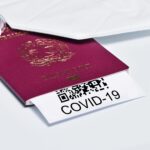The Anatomy of a Flawless Application: Conquering Forms and Documentation
Once an Invitation to Apply is received, the focus shifts to meticulous paperwork. An incomplete or incorrectly completed application package is one of the most preventable reasons for refusal. Every PGP application requires a specific set of forms for the sponsor, the principal applicant (the parent or grandparent), and any accompanying dependents. A pervasive mistake is using outdated versions of these forms. IRCC updates its forms periodically, and using an old one will lead to the application being returned. Always download the required forms directly from the official IRCC website after receiving the ITA. Another common oversight is failing to answer every single question. If a question does not apply, it should be answered with “Not Applicable” or “N/A,” not left blank. Missing signatures, whether physical or digital (as per the instructions), are another fatal flaw. Beyond the forms, the supporting documentation must be just as perfect. The document checklist provided by IRCC is not a suggestion; it is a mandatory list. Failure to provide even one required document can halt the process. Special attention must be paid to documents that are not in English or French, as they must be accompanied by a certified translation and an affidavit from the translator. Gathering birth certificates, marriage certificates, and police clearances can take time, so this process should begin as soon as possible.
Beyond the Basics: Advanced Pitfalls in PGP Sponsorship Applications
While financial and documentation errors are common, several more nuanced pitfalls can derail an otherwise strong PGP application. One such issue is the failure to disclose all relevant information, which can lead to an allegation of misrepresentation. Misrepresentation is a very serious matter in Canadian immigration law and can result in a five-year ban from making any application. This includes failing to declare all family members (even non-accompanying ones) or providing inaccurate information about previous visa refusals. Another complex area is a change in circumstances after the application has been submitted. Life events such as a marriage, divorce, birth of a child, or a change in the sponsor’s financial situation must be communicated to IRCC promptly. Failure to do so can jeopardize the application. For instance, if a sponsor’s family size increases, their MNI requirement may also increase, and they must still meet the new, higher threshold. Finally, a misunderstanding of the roles within the application can cause confusion. The sponsor and the principal applicant (the parent or grandparent being sponsored) have distinct roles and responsibilities. The sponsor is responsible for the financial undertaking, while the principal applicant must prove their identity and relationships. Ensuring the application correctly reflects these roles and that all information is consistent across all forms is vital for a smooth process.
Frequently Asked Questions
What is the Parents and Grandparents Program (PGP)?
The Parents and Grandparents Program (PGP) is a Canadian family sponsorship immigration stream that allows eligible Canadian citizens and permanent residents to sponsor their parents and grandparents to come to Canada as permanent residents.
What is the Minimum Necessary Income (MNI) for the PGP?
The Minimum Necessary Income (MNI) is the minimum income a sponsor (and co-signer, if applicable) must demonstrate for three consecutive tax years to be eligible for the PGP. This amount is based on the Low Income Cut-Offs (LICO) plus 30% and varies depending on the total number of people the sponsor will be financially responsible for.
How does the PGP invitation process work?
The PGP uses a lottery system. Potential sponsors first submit an “Interest to Sponsor” form, and IRCC then randomly selects candidates from this pool and issues them an Invitation to Apply (ITA), after which they can submit a full application.
What happens if a PGP application is incomplete?
An incomplete PGP application, such as one with missing forms, unanswered questions, or missing documents, will typically be returned by IRCC without being processed. This means the sponsor loses their chance to apply in that year’s intake and must wait for the next opportunity.
Can a co-signer help meet the PGP financial requirements?
Yes, a sponsor’s spouse or common-law partner can act as a co-signer on the application. Their income can be combined with the sponsor’s income to meet the Minimum Necessary Income (MNI) requirement, provided they also meet all eligibility criteria.
What are the most common document mistakes in PGP applications?
The most common document mistakes include using outdated application forms, failing to provide certified translations for documents not in English or French, and not submitting official Notices of Assessment (NOAs) from the CRA as proof of income.
Talk to us to find out more. ->
The content above is not intended to provide legal advice or opinions of any kind and may not be used for professional or commercial purposes.
The Anatomy of a Flawless Application: Conquering Forms and Documentation
Once an Invitation to Apply is received, the focus shifts to meticulous paperwork. An incomplete or incorrectly completed application package is one of the most preventable reasons for refusal. Every PGP application requires a specific set of forms for the sponsor, the principal applicant (the parent or grandparent), and any accompanying dependents. A pervasive mistake is using outdated versions of these forms. IRCC updates its forms periodically, and using an old one will lead to the application being returned. Always download the required forms directly from the official IRCC website after receiving the ITA. Another common oversight is failing to answer every single question. If a question does not apply, it should be answered with “Not Applicable” or “N/A,” not left blank. Missing signatures, whether physical or digital (as per the instructions), are another fatal flaw. Beyond the forms, the supporting documentation must be just as perfect. The document checklist provided by IRCC is not a suggestion; it is a mandatory list. Failure to provide even one required document can halt the process. Special attention must be paid to documents that are not in English or French, as they must be accompanied by a certified translation and an affidavit from the translator. Gathering birth certificates, marriage certificates, and police clearances can take time, so this process should begin as soon as possible.
Beyond the Basics: Advanced Pitfalls in PGP Sponsorship Applications
While financial and documentation errors are common, several more nuanced pitfalls can derail an otherwise strong PGP application. One such issue is the failure to disclose all relevant information, which can lead to an allegation of misrepresentation. Misrepresentation is a very serious matter in Canadian immigration law and can result in a five-year ban from making any application. This includes failing to declare all family members (even non-accompanying ones) or providing inaccurate information about previous visa refusals. Another complex area is a change in circumstances after the application has been submitted. Life events such as a marriage, divorce, birth of a child, or a change in the sponsor’s financial situation must be communicated to IRCC promptly. Failure to do so can jeopardize the application. For instance, if a sponsor’s family size increases, their MNI requirement may also increase, and they must still meet the new, higher threshold. Finally, a misunderstanding of the roles within the application can cause confusion. The sponsor and the principal applicant (the parent or grandparent being sponsored) have distinct roles and responsibilities. The sponsor is responsible for the financial undertaking, while the principal applicant must prove their identity and relationships. Ensuring the application correctly reflects these roles and that all information is consistent across all forms is vital for a smooth process.
Frequently Asked Questions
What is the Parents and Grandparents Program (PGP)?
The Parents and Grandparents Program (PGP) is a Canadian family sponsorship immigration stream that allows eligible Canadian citizens and permanent residents to sponsor their parents and grandparents to come to Canada as permanent residents.
What is the Minimum Necessary Income (MNI) for the PGP?
The Minimum Necessary Income (MNI) is the minimum income a sponsor (and co-signer, if applicable) must demonstrate for three consecutive tax years to be eligible for the PGP. This amount is based on the Low Income Cut-Offs (LICO) plus 30% and varies depending on the total number of people the sponsor will be financially responsible for.
How does the PGP invitation process work?
The PGP uses a lottery system. Potential sponsors first submit an “Interest to Sponsor” form, and IRCC then randomly selects candidates from this pool and issues them an Invitation to Apply (ITA), after which they can submit a full application.
What happens if a PGP application is incomplete?
An incomplete PGP application, such as one with missing forms, unanswered questions, or missing documents, will typically be returned by IRCC without being processed. This means the sponsor loses their chance to apply in that year’s intake and must wait for the next opportunity.
Can a co-signer help meet the PGP financial requirements?
Yes, a sponsor’s spouse or common-law partner can act as a co-signer on the application. Their income can be combined with the sponsor’s income to meet the Minimum Necessary Income (MNI) requirement, provided they also meet all eligibility criteria.
What are the most common document mistakes in PGP applications?
The most common document mistakes include using outdated application forms, failing to provide certified translations for documents not in English or French, and not submitting official Notices of Assessment (NOAs) from the CRA as proof of income.
Talk to us to find out more. ->
The content above is not intended to provide legal advice or opinions of any kind and may not be used for professional or commercial purposes.
- Three-Year Rule: You must prove you have met the MNI for the three consecutive tax years before you apply. For the 2025 intake, this will likely be for the tax years 2024, 2023, and 2022.
- Calculate Family Size Correctly: The total number of people you are responsible for is crucial. It includes yourself, your current family members, and the family members you are sponsoring.
- Only NOAs Are Accepted: Your income must be proven with Notices of Assessment (NOA) or Option C Printouts from the CRA. Other financial documents will not be considered as primary proof.
- Co-Signer’s Income: A spouse or common-law partner can act as a co-signer to combine incomes. Their income is also assessed based on the same three-year rule and NOA requirement.
- No Exceptions for Income Shortfalls: There is no flexibility on the MNI. Falling short, even by a few dollars in any of the three years, will result in a refusal.
The Anatomy of a Flawless Application: Conquering Forms and Documentation
Once an Invitation to Apply is received, the focus shifts to meticulous paperwork. An incomplete or incorrectly completed application package is one of the most preventable reasons for refusal. Every PGP application requires a specific set of forms for the sponsor, the principal applicant (the parent or grandparent), and any accompanying dependents. A pervasive mistake is using outdated versions of these forms. IRCC updates its forms periodically, and using an old one will lead to the application being returned. Always download the required forms directly from the official IRCC website after receiving the ITA. Another common oversight is failing to answer every single question. If a question does not apply, it should be answered with “Not Applicable” or “N/A,” not left blank. Missing signatures, whether physical or digital (as per the instructions), are another fatal flaw. Beyond the forms, the supporting documentation must be just as perfect. The document checklist provided by IRCC is not a suggestion; it is a mandatory list. Failure to provide even one required document can halt the process. Special attention must be paid to documents that are not in English or French, as they must be accompanied by a certified translation and an affidavit from the translator. Gathering birth certificates, marriage certificates, and police clearances can take time, so this process should begin as soon as possible.
Beyond the Basics: Advanced Pitfalls in PGP Sponsorship Applications
While financial and documentation errors are common, several more nuanced pitfalls can derail an otherwise strong PGP application. One such issue is the failure to disclose all relevant information, which can lead to an allegation of misrepresentation. Misrepresentation is a very serious matter in Canadian immigration law and can result in a five-year ban from making any application. This includes failing to declare all family members (even non-accompanying ones) or providing inaccurate information about previous visa refusals. Another complex area is a change in circumstances after the application has been submitted. Life events such as a marriage, divorce, birth of a child, or a change in the sponsor’s financial situation must be communicated to IRCC promptly. Failure to do so can jeopardize the application. For instance, if a sponsor’s family size increases, their MNI requirement may also increase, and they must still meet the new, higher threshold. Finally, a misunderstanding of the roles within the application can cause confusion. The sponsor and the principal applicant (the parent or grandparent being sponsored) have distinct roles and responsibilities. The sponsor is responsible for the financial undertaking, while the principal applicant must prove their identity and relationships. Ensuring the application correctly reflects these roles and that all information is consistent across all forms is vital for a smooth process.
Frequently Asked Questions
What is the Parents and Grandparents Program (PGP)?
The Parents and Grandparents Program (PGP) is a Canadian family sponsorship immigration stream that allows eligible Canadian citizens and permanent residents to sponsor their parents and grandparents to come to Canada as permanent residents.
What is the Minimum Necessary Income (MNI) for the PGP?
The Minimum Necessary Income (MNI) is the minimum income a sponsor (and co-signer, if applicable) must demonstrate for three consecutive tax years to be eligible for the PGP. This amount is based on the Low Income Cut-Offs (LICO) plus 30% and varies depending on the total number of people the sponsor will be financially responsible for.
How does the PGP invitation process work?
The PGP uses a lottery system. Potential sponsors first submit an “Interest to Sponsor” form, and IRCC then randomly selects candidates from this pool and issues them an Invitation to Apply (ITA), after which they can submit a full application.
What happens if a PGP application is incomplete?
An incomplete PGP application, such as one with missing forms, unanswered questions, or missing documents, will typically be returned by IRCC without being processed. This means the sponsor loses their chance to apply in that year’s intake and must wait for the next opportunity.
Can a co-signer help meet the PGP financial requirements?
Yes, a sponsor’s spouse or common-law partner can act as a co-signer on the application. Their income can be combined with the sponsor’s income to meet the Minimum Necessary Income (MNI) requirement, provided they also meet all eligibility criteria.
What are the most common document mistakes in PGP applications?
The most common document mistakes include using outdated application forms, failing to provide certified translations for documents not in English or French, and not submitting official Notices of Assessment (NOAs) from the CRA as proof of income.
Talk to us to find out more. ->
The content above is not intended to provide legal advice or opinions of any kind and may not be used for professional or commercial purposes.
- Three-Year Rule: You must prove you have met the MNI for the three consecutive tax years before you apply. For the 2025 intake, this will likely be for the tax years 2024, 2023, and 2022.
- Calculate Family Size Correctly: The total number of people you are responsible for is crucial. It includes yourself, your current family members, and the family members you are sponsoring.
- Only NOAs Are Accepted: Your income must be proven with Notices of Assessment (NOA) or Option C Printouts from the CRA. Other financial documents will not be considered as primary proof.
- Co-Signer’s Income: A spouse or common-law partner can act as a co-signer to combine incomes. Their income is also assessed based on the same three-year rule and NOA requirement.
- No Exceptions for Income Shortfalls: There is no flexibility on the MNI. Falling short, even by a few dollars in any of the three years, will result in a refusal.
The Anatomy of a Flawless Application: Conquering Forms and Documentation
Once an Invitation to Apply is received, the focus shifts to meticulous paperwork. An incomplete or incorrectly completed application package is one of the most preventable reasons for refusal. Every PGP application requires a specific set of forms for the sponsor, the principal applicant (the parent or grandparent), and any accompanying dependents. A pervasive mistake is using outdated versions of these forms. IRCC updates its forms periodically, and using an old one will lead to the application being returned. Always download the required forms directly from the official IRCC website after receiving the ITA. Another common oversight is failing to answer every single question. If a question does not apply, it should be answered with “Not Applicable” or “N/A,” not left blank. Missing signatures, whether physical or digital (as per the instructions), are another fatal flaw. Beyond the forms, the supporting documentation must be just as perfect. The document checklist provided by IRCC is not a suggestion; it is a mandatory list. Failure to provide even one required document can halt the process. Special attention must be paid to documents that are not in English or French, as they must be accompanied by a certified translation and an affidavit from the translator. Gathering birth certificates, marriage certificates, and police clearances can take time, so this process should begin as soon as possible.
Beyond the Basics: Advanced Pitfalls in PGP Sponsorship Applications
While financial and documentation errors are common, several more nuanced pitfalls can derail an otherwise strong PGP application. One such issue is the failure to disclose all relevant information, which can lead to an allegation of misrepresentation. Misrepresentation is a very serious matter in Canadian immigration law and can result in a five-year ban from making any application. This includes failing to declare all family members (even non-accompanying ones) or providing inaccurate information about previous visa refusals. Another complex area is a change in circumstances after the application has been submitted. Life events such as a marriage, divorce, birth of a child, or a change in the sponsor’s financial situation must be communicated to IRCC promptly. Failure to do so can jeopardize the application. For instance, if a sponsor’s family size increases, their MNI requirement may also increase, and they must still meet the new, higher threshold. Finally, a misunderstanding of the roles within the application can cause confusion. The sponsor and the principal applicant (the parent or grandparent being sponsored) have distinct roles and responsibilities. The sponsor is responsible for the financial undertaking, while the principal applicant must prove their identity and relationships. Ensuring the application correctly reflects these roles and that all information is consistent across all forms is vital for a smooth process.
Frequently Asked Questions
What is the Parents and Grandparents Program (PGP)?
The Parents and Grandparents Program (PGP) is a Canadian family sponsorship immigration stream that allows eligible Canadian citizens and permanent residents to sponsor their parents and grandparents to come to Canada as permanent residents.
What is the Minimum Necessary Income (MNI) for the PGP?
The Minimum Necessary Income (MNI) is the minimum income a sponsor (and co-signer, if applicable) must demonstrate for three consecutive tax years to be eligible for the PGP. This amount is based on the Low Income Cut-Offs (LICO) plus 30% and varies depending on the total number of people the sponsor will be financially responsible for.
How does the PGP invitation process work?
The PGP uses a lottery system. Potential sponsors first submit an “Interest to Sponsor” form, and IRCC then randomly selects candidates from this pool and issues them an Invitation to Apply (ITA), after which they can submit a full application.
What happens if a PGP application is incomplete?
An incomplete PGP application, such as one with missing forms, unanswered questions, or missing documents, will typically be returned by IRCC without being processed. This means the sponsor loses their chance to apply in that year’s intake and must wait for the next opportunity.
Can a co-signer help meet the PGP financial requirements?
Yes, a sponsor’s spouse or common-law partner can act as a co-signer on the application. Their income can be combined with the sponsor’s income to meet the Minimum Necessary Income (MNI) requirement, provided they also meet all eligibility criteria.
What are the most common document mistakes in PGP applications?
The most common document mistakes include using outdated application forms, failing to provide certified translations for documents not in English or French, and not submitting official Notices of Assessment (NOAs) from the CRA as proof of income.
Talk to us to find out more. ->
The content above is not intended to provide legal advice or opinions of any kind and may not be used for professional or commercial purposes.
The Parents and Grandparents Program (PGP) represents a cherished opportunity for Canadian citizens and permanent residents to reunite with their loved ones. However, the path to sponsorship is paved with intricate details and stringent requirements. Due to the program’s immense popularity and limited intake quotas, even a minor error can lead to a devastating refusal. This guide provides an in-depth analysis of the most frequent and consequential mistakes made during the PGP application process, offering invaluable insights to help fortify your application and enhance its prospects for success in the 2025 intake.
Table of Contents
- The Crucial First Step: Understanding the PGP Intake and Invitation ProcessNavigating the Financial Labyrinth: Mastering the Minimum Necessary Income (MNI) RequirementThe Anatomy of a Flawless Application: Conquering Forms and DocumentationBeyond the Basics: Advanced Pitfalls in PGP Sponsorship ApplicationsFrequently Asked Questions
The Crucial First Step: Understanding the PGP Intake and Invitation Process
Before diving into the complexities of the application itself, it is fundamental to grasp the unique structure of the Parents and Grandparents Program intake. Unlike many other immigration streams, the PGP does not operate on a first-come, first-served basis. Instead, Immigration, Refugees and Citizenship Canada (IRCC) utilizes a lottery system to manage the high volume of interest. The process begins with a limited window during which potential sponsors must submit an “Interest to Sponsor” form online. This is not the application itself but a declaration of intent. Submitting this form correctly and within the designated timeframe is the sole gateway to being considered. After the submission period closes, IRCC conducts a random draw from the pool of all eligible potential sponsors. Those selected in this lottery are issued an Invitation to Apply (ITA). Receiving an ITA is a momentous step, but it is also the start of a new, time-sensitive race. Sponsors are given a strict deadline, typically 60 days, to submit a complete and thorough application package. Misunderstanding this foundational process is a primary mistake; many individuals mistakenly believe that submitting the Interest to Sponsor form is the main application, leading to a lack of preparation for the rigorous documentation stage that follows an ITA.
Navigating the Financial Labyrinth: Mastering the Minimum Necessary Income (MNI) Requirement
Arguably the most significant hurdle in any PGP application is demonstrating the sponsor’s financial capacity. IRCC requires sponsors (and their co-signers, if applicable) to meet or exceed the Minimum Necessary Income (MNI) for the three consecutive taxation years immediately preceding the date of application. This figure is based on Statistics Canada’s Low Income Cut-Offs (LICO) plus 30%. The required MNI is directly tied to the total number of people the sponsor will be financially responsible for. This includes the sponsor, their spouse or common-law partner, their dependent children, the parents or grandparents being sponsored, and any of their dependents. A frequent and critical error is miscalculating this family size, which leads to referencing the wrong MNI figure and an automatic refusal. Furthermore, the only acceptable proof of income is official documentation issued by the Canada Revenue Agency (CRA), specifically the Notices of Assessment (NOA) or an equivalent Option C Printout. Relying on pay stubs, letters of employment, or T4 slips is not sufficient and will result in a failed application. Sponsors must ensure they have their NOAs for the specified three years and that the income reported on line 15000 (total income) meets the threshold for each of those years. Any deviation, even by a small amount, will lead to ineligibility.
Key Takeaways for Meeting PGP Financial Requirements:
- Three-Year Rule: You must prove you have met the MNI for the three consecutive tax years before you apply. For the 2025 intake, this will likely be for the tax years 2024, 2023, and 2022.
- Calculate Family Size Correctly: The total number of people you are responsible for is crucial. It includes yourself, your current family members, and the family members you are sponsoring.
- Only NOAs Are Accepted: Your income must be proven with Notices of Assessment (NOA) or Option C Printouts from the CRA. Other financial documents will not be considered as primary proof.
- Co-Signer’s Income: A spouse or common-law partner can act as a co-signer to combine incomes. Their income is also assessed based on the same three-year rule and NOA requirement.
- No Exceptions for Income Shortfalls: There is no flexibility on the MNI. Falling short, even by a few dollars in any of the three years, will result in a refusal.
The Anatomy of a Flawless Application: Conquering Forms and Documentation
Once an Invitation to Apply is received, the focus shifts to meticulous paperwork. An incomplete or incorrectly completed application package is one of the most preventable reasons for refusal. Every PGP application requires a specific set of forms for the sponsor, the principal applicant (the parent or grandparent), and any accompanying dependents. A pervasive mistake is using outdated versions of these forms. IRCC updates its forms periodically, and using an old one will lead to the application being returned. Always download the required forms directly from the official IRCC website after receiving the ITA. Another common oversight is failing to answer every single question. If a question does not apply, it should be answered with “Not Applicable” or “N/A,” not left blank. Missing signatures, whether physical or digital (as per the instructions), are another fatal flaw. Beyond the forms, the supporting documentation must be just as perfect. The document checklist provided by IRCC is not a suggestion; it is a mandatory list. Failure to provide even one required document can halt the process. Special attention must be paid to documents that are not in English or French, as they must be accompanied by a certified translation and an affidavit from the translator. Gathering birth certificates, marriage certificates, and police clearances can take time, so this process should begin as soon as possible.
Beyond the Basics: Advanced Pitfalls in PGP Sponsorship Applications
While financial and documentation errors are common, several more nuanced pitfalls can derail an otherwise strong PGP application. One such issue is the failure to disclose all relevant information, which can lead to an allegation of misrepresentation. Misrepresentation is a very serious matter in Canadian immigration law and can result in a five-year ban from making any application. This includes failing to declare all family members (even non-accompanying ones) or providing inaccurate information about previous visa refusals. Another complex area is a change in circumstances after the application has been submitted. Life events such as a marriage, divorce, birth of a child, or a change in the sponsor’s financial situation must be communicated to IRCC promptly. Failure to do so can jeopardize the application. For instance, if a sponsor’s family size increases, their MNI requirement may also increase, and they must still meet the new, higher threshold. Finally, a misunderstanding of the roles within the application can cause confusion. The sponsor and the principal applicant (the parent or grandparent being sponsored) have distinct roles and responsibilities. The sponsor is responsible for the financial undertaking, while the principal applicant must prove their identity and relationships. Ensuring the application correctly reflects these roles and that all information is consistent across all forms is vital for a smooth process.
Frequently Asked Questions
What is the Parents and Grandparents Program (PGP)?
The Parents and Grandparents Program (PGP) is a Canadian family sponsorship immigration stream that allows eligible Canadian citizens and permanent residents to sponsor their parents and grandparents to come to Canada as permanent residents.
What is the Minimum Necessary Income (MNI) for the PGP?
The Minimum Necessary Income (MNI) is the minimum income a sponsor (and co-signer, if applicable) must demonstrate for three consecutive tax years to be eligible for the PGP. This amount is based on the Low Income Cut-Offs (LICO) plus 30% and varies depending on the total number of people the sponsor will be financially responsible for.
How does the PGP invitation process work?
The PGP uses a lottery system. Potential sponsors first submit an “Interest to Sponsor” form, and IRCC then randomly selects candidates from this pool and issues them an Invitation to Apply (ITA), after which they can submit a full application.
What happens if a PGP application is incomplete?
An incomplete PGP application, such as one with missing forms, unanswered questions, or missing documents, will typically be returned by IRCC without being processed. This means the sponsor loses their chance to apply in that year’s intake and must wait for the next opportunity.
Can a co-signer help meet the PGP financial requirements?
Yes, a sponsor’s spouse or common-law partner can act as a co-signer on the application. Their income can be combined with the sponsor’s income to meet the Minimum Necessary Income (MNI) requirement, provided they also meet all eligibility criteria.
What are the most common document mistakes in PGP applications?
The most common document mistakes include using outdated application forms, failing to provide certified translations for documents not in English or French, and not submitting official Notices of Assessment (NOAs) from the CRA as proof of income.
Talk to us to find out more. ->
The content above is not intended to provide legal advice or opinions of any kind and may not be used for professional or commercial purposes.







